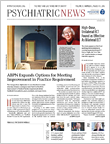Like most aspects of medicine, documentation has undergone many changes since the introduction of electronic medical records. With electronic documentation comes a greater freedom to describe our patients and our plans for them in greater detail than ever before. However, this comes at a cost, as too often our notes can become bogged down with extraneous details that make the note longer but don’t add much useful information. When writing your next note, remember these five tips to more effectively communicate your ideas.
1. Write with the reader in mind. Always try to write with your intended reader in mind. This will help you to figure out which information is critical as opposed to unnecessary. If you are unsure whether any bit of information needs to be included, ask yourself, “If I were another doctor taking care of this patient, would I want to know this information?”
2. Focus on information that will change management. You may have heard the phrase, “Only order labs that will change management.” This holds true in documentation as well, so when in doubt, use this standard to determine whether information is relevant enough for inclusion.
3. Spend most of your time on the assessment and plan. In the early parts of training, it is easy to become focused on writing an extremely detailed subjective section detailing exactly what you spoke with the patient about during morning rounds. Don’t get stuck in this habit. Spend most of your time writing a thorough assessment and plan, as this is the part of the record that will be read the most.
4. Use formatting to your advantage. Take advantage of formatting to help combat “note bloat.” Bolding parts of the note can help important information stand out. When documenting a physical exam, for example, put any positive findings in bold. (For example, “Alert and oriented x3. CN 2-12 grossly intact. 5/5 strength throughout BUE and BLE, normal range of motion, no swollen or erythematous joints. Reduced vibration and proprioception on great toes bilaterally. Otherwise normal sensory exam.”) In addition, you can consider italicizing any changes in the plan to draw a reader’s attention to them:
•
Continue inpatient hospitalization
•
Increase escitalopram to 20 mg po daily
•
Continue gabapentin 300 mg po tid
Formatting helps the reader identify the most important information you are trying to communicate.
5. Take a problems-based approach to your plan. When writing your plan, link each aspect of your treatment to its intended therapeutic target. For example, don’t write something like the following:
#MDD, PTSD, anxiety NOS, EtOH withdrawal:
•
Continue inpatient hospitalization
•
Lorazepam 1 qhs and 2 q4h prn tremor, diaphoresis, SBP>180, DBP>100, HR>110
Instead, try to assign each treatment thoughtfully with the diagnosis. (Hashtags are used at my institution instead of numbering each diagnosis.)
#MDD:
•
Continue inpatient hospitalization
#PTSD:
#Anxiety NOS:
#EtOH withdrawal:
•
Lorazepam 2 mg po q4h prn tremor, diaphoresis, SBP>180, DBP>100, HR>110
This will help the other people taking care of this patient (for example, nursing staff or cross-covering physicians) to better understand your thought process. In addition, it can help to clarify the purpose of medications that can be used for more than one purpose (such as sertraline and lorazepam in the example above). ■
This article is based on information from
APA’s Resident’s Guide to Surviving Psychiatric Training. The guide was written by residents and fellows, for residents and fellows, to help them with the day-to-day challenges of training. The guide offers practical advice on more than 50 topics and can be accessed free
here.

